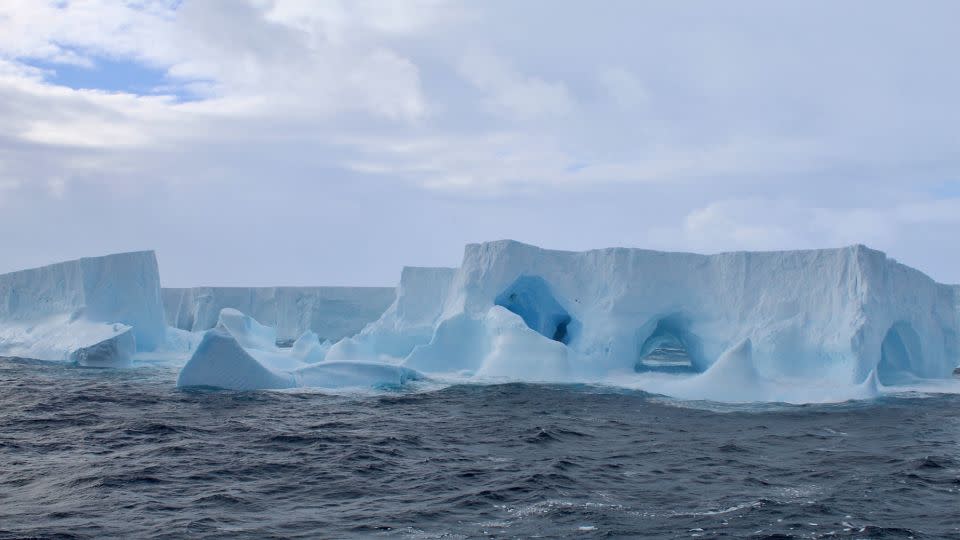Editor’s note: A version of this story appeared in CNN’s Wonder Theory science newsletter. To get it in your inbox, Register for free here.
When archaeologists mine layers of soil to tell stories about the past, sometimes their discoveries capture exciting traces of humanity.
Excavations in the ancient city of Pompeii have unearthed the remains of a man and a woman in a small bedroom buried under ash and volcanic glass from the eruption of Mount Vesuvius in 79 AD.
It is understood the couple had taken refuge in the temporary sleeping area while the house was being renovated, with the woman still clutching an earring and a pile of gold, silver and bronze coins when she died.
Meanwhile, a team aiming to restore a neglected and earthquake-damaged archaeological site in Turkey has found a tiny 3,500-year-old cuneiform tablet. The small piece of clay covered in wedge-shaped script resembles a purchase receipt that could provide insights into Late Bronze Age society.
And new findings about an iconic Neolithic monument could shed light on the people who built it.
Long ago

Thousands of years after the massive stones of Stonehenge were erected in what is now southern England, mysteries remain, but a new study of the Altar Stone at the heart of the horseshoe-shaped monument suggests it travelled a very long distance to get there.
Mineral analysis revealed that the stone most likely came from the north-east of present-day Scotland, 700 kilometres away, rather than Wales, disproving a century-old theory.
“This is the longest recorded journey of any stone used in a monument at that time,” said Nick Pearce, professor of geography and earth sciences at Aberystwyth University in Wales.
Researchers think the stone may have been transported from the open sea, suggesting that ancient Britain and its people were much more advanced than previously thought 5,000 years ago.
Sun update
In 1607, German astronomer Johannes Kepler used a projection device to draw sunspots he saw, several years before the first telescopic observations were made.
The drawings are now helping scientists solve the sun puzzle that has been working on for centuries.
Astronomers use sunspots to help them track the 11-year cycle of increasing and decreasing activity that the sun experiences. However, between 1645 and 1715, the sun experienced a phenomenon known as the Maunder Minimum, a period of extremely weak and abnormal solar cycles.
A new analysis of Kepler’s long-ignored plots shows that the two solar cycles before this grand minimum occurred normally, meaning that as-yet-unidentified precursors to what was thought to be an anomaly likely existed.
Ocean Secrets


The world’s largest iceberg has been slowly rotating in the Southern Ocean for months, and it is not yet known when this rotation will end.
The iceberg, known as A23a, first broke away from Antarctica’s Filchner-Ronne ice shelf in 1986, forming a chunk of ice slightly larger than Rhode Island.
After drifting toward an underwater mountain, it was caught in a water vortex caused by ocean currents hitting the underwater mountain, which caused the iceberg to rotate about 15 degrees per day.
Scientists are baffled by this phenomenon and are monitoring the frozen block to see how long it remains trapped in the vortex and slowly melts.
Other worlds
The InSight mission may be over in 2022, but data from the NASA lander has revealed evidence of a reservoir of water deep beneath the Martian surface.
New estimates suggest there could be enough water trapped in tiny cracks and pores in rocks at the center of Mars’ crust to fill oceans on the planet’s surface.
Access to the water is impossible, as it lies 11.5 to 20 kilometers below the surface.
But if the water is accessible, scientists think the underground reservoir could be a new place to search for life on the red planet.
Beyond the universe


Chinese astronomers first noticed what they called a “guest star” in 1181, and for six months, the dying star appeared as bright as Saturn in the night sky. And the supernova, observed long before telescopes, has baffled researchers ever since.
Amateur astronomer Dana Patchick found a remnant called a nebula, or giant cloud of gas and dust, associated with a supernova in 2013. Now, scientists have created a model of the supernova’s evolution and uncovered a cosmic surprise.
The event that created the nebula could be a rare Type 2 squat supernova, or the result of two white dwarf stars colliding and leaving behind a “zombie star.” And the so-called zombie star has shown intriguing signs of recent activity that could provide insight into the life and death of stars.
Be careful
Discover these unexpected stories:
— NASA will soon announce its decision on how the crew of Boeing’s Starliner mission will return to Earth as it faces issues such as limited food supplies on the International Space Station.
— A fossil hunter made the discovery of a lifetime when he found a giant Ice Age mammoth tooth in a Mississippi stream.
—Invasive Jorō spiders continue to spread and weave their massive webs nearly everywhere, and how they “stay cool under pressure” may explain why, according to the lead author of a new study on the spiders’ heart rates.
The wreck of a torpedoed World War I battleship off the coast of Scotland has been found in “incredible condition”, according to divers, but the wreck also brings with it the tragic tale of those on board when it sank.
The asteroid that slammed into Earth 66 million years ago, setting off the events that led to the extinction of the dinosaurs, was a rare ball of clay-rich mud, scientists have discovered.
Like what you read? Oh, but there’s more. Sign up here To receive the next issue of Wonder Theory, brought to you by CNN Space and Science writers, in your inbox Ashley Strickland And Katie HuntThey find wonders on planets beyond our solar system and make discoveries from the ancient world.
For more CNN news and bulletins, create an account at CNN.com